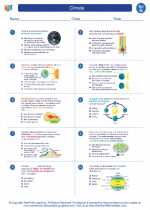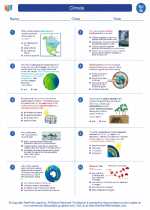Adaptations in Living Organisms
Adaptations are the special features and behaviors that living organisms develop in order to survive in their environments. These features can be structural, behavioral, or physiological, and they help an organism to better fit into its surroundings. Adaptations are a result of the process of natural selection, where organisms with advantageous traits are more likely to survive and reproduce.
Types of Adaptations
Structural Adaptations: These are physical features of an organism, such as the shape of a bird's beak or the color of an animal's fur, that help it to survive in its environment.
Behavioral Adaptations: These are the actions or behaviors of an organism, such as migration patterns or hunting strategies, that help it to survive and thrive.
Physiological Adaptations: These are internal mechanisms and processes, such as the ability to regulate body temperature or the production of venom, that help an organism to survive in its environment.
Examples of Adaptations
Camouflage: Some animals have developed the ability to blend in with their surroundings, making it easier for them to hide from predators or to sneak up on prey.
Mimicry: Some organisms have evolved to mimic the appearance or behavior of other species, either to avoid being eaten or to gain an advantage in hunting.
Hibernation: Many animals have adapted the ability to enter a state of dormancy during harsh environmental conditions, conserving energy until the environment becomes more favorable.
Study Guide for Adaptations
- What are adaptations and why are they important for living organisms?
- Discuss the different types of adaptations with examples.
- Explain the concept of natural selection and its role in the development of adaptations.
- Research and present a case study of a specific animal or plant and its unique adaptations for survival in its environment.
- Discuss the impact of human activities on the adaptations of living organisms and the importance of conservation efforts.
Understanding adaptations is crucial for comprehending the diversity of life on Earth and the intricate ways in which organisms have evolved to thrive in their habitats.










